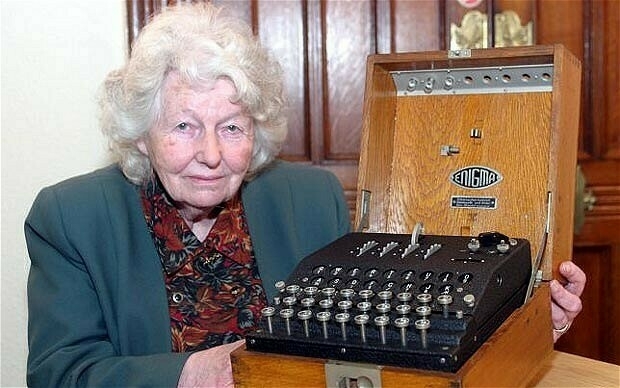world war ii
How the Enigma Machine worked
Murlyn Hakon of Bletchley Park explains how the Enigma Machine worked.
The remarkable thing about Enigma, is that when you press a letter on the keyboard and the subsequent enciphered letter lights up to the rear of the machine, the chances of that letter lighting up are nearly 158 million million million to 1.
(Revised and republished April 21st, 2025)
Mavis Batey: Bletchley Park codebreaker

Mavis Batey was one of the codebreakers working at Bletchley Park during World War II. She recently passed away at age 92. Batey was part of the codebreaking team that ensured a successful landing for Allied forces on D-Day.
She initially worked in London, checking commercial codes and perusing the personal columns of The Times for coded spy messages. After showing promise, she was plucked out and sent to Bletchley to work in the research unit run by Dilly Knox. Knox had led the way for the British on the breaking of the Enigma ciphers, but was now working in a cottage next to the mansion on new codes and ciphers that had not been broken by Hut 6, where the German Army and Air Force ciphers were cracked. “It was a strange little outfit in the cottage,” Mavis said. Knox was a true eccentric, often so wrapped up in the puzzle he was working on that he would absent-mindedly stuff a lunchtime sandwich into his pipe rather than his tobacco: “Organisation is not a word you would associate with Dilly Knox. When I arrived, he said: 'Oh, hello, we’re breaking machines, have you got a pencil?’ That was it. I was never really told what to do. I think, looking back on it, that was a great precedent in my life, because he taught me to think that you could do things yourself without always checking up to see what the book said."
(Revised and republished April 21st, 2025)